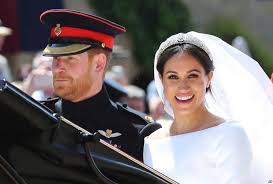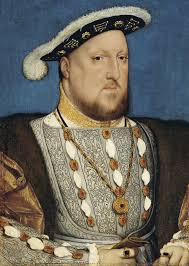‘Until death do us part’

Prince Harry and Duchess Meghan Markle at their wedding. AP PHOTO
“Love seeks to be definitive; it cannot be an arrangement ‘until further notice’” (Catechism of the Catholic Church, 1646). I note here that the Catholic and the Anglican matrimonial promises are the same, and the following are the five characteristics of the Sacrament of Matrimony:
A FREELY ENTERED COVENANT – “shotgun” and napilitan marriages are inadmissible.
A LIFELONG COMMITMENT – you promised: “Until death do us part.”
HETEROSEXUAL – “Male and female He created them.”
MONOGAMOUS – with only one partner.
FORGIVING AND PATIENT LOVE. Lots of them. Planeloads of them.
Prince Harry and Duchess Meghan Merkle
Using the 16th-century Anglican Book of Common Prayer, the same official book used by Prince Charles and Princess Diana in 1981, Prince Harry and Meghan Markle made a solemn and public promise: “For better for worse… until death do us part.”
On that beautiful day last May, the lifetime commitment of the royal couple was solemnized at St. George’s Chapel at Windsor Castle, a splendid sanctuary of the British monarch for a thousand years. Harry is Anglican and Meghan was converted into Anglicanism from being a Catholic right before the marriage.
From the outset, this particular marriage has shaken up the British monarchy in a big way. First up, the marriage of a Prince to a divorced partner is so “unroyal.” Of course, it’s not an issue that Duchess Meghan’s that her parents are divorced, she herself is a divorcee, and her former husband, Hollywood producer Trevor Engelson, is still alive. It only means the promise of her first valid marriage was broken.
Prince Charles divorced Princess Diana in 1996
As in every royal wedding, global citizens wait and see what happens to that marital promise “until death do us part.” What the global citizens remember, I presume, is the fairy tale romance of Prince Charles and Princess Diana.
The “perfect” couple was solemnly married in the presence of 2,650 VIP guests, mostly of royal blood, and their public exchange of vows was the envy of the world. A year after, Prince William was born, followed by Prince Harry in 1984.
In 1992, much to the consternation of their idolizing fans, Prince Charles and Princess Diana announced a separation, a cooling off period, a generous gift of space to each other “to work things out.”
Nevertheless, in 1996, the royal couple decided to divorce, with Princess Diana assured of a generous settlement, the right to retain her apartments at Kensington Palace, and her title of “Princess of Wales.” Sadly, Diana met her tragic death a year after.
Henry VIII (1491-1547), King of England
Henry VIIIwas married six times. And every school kid in Great Britain today knows the rhyme: “divorced, beheaded, died, divorced, beheaded, survived,” pertaining to the six wives in succession.

King Henry VIII of England
In the English monarch history, King Henry VIII became infamous when he divorced his first wife to marry Anne Boleyn when he did not get an annulment from the pope. Divorce is not annulment. Divorce ends a valid and sanctified marriage, the termination of marital union.
In the Catholic Church, a marriage is valid until proven otherwise (lack of full consent, a partner was previously married, age requirement, and other impediments). Annulment means there was no valid marriage from the beginning; hence it never existed, hence it is void. But Henry VIII’s marriage to Catherine of Aragon was valid. And he wasn’t able to prove otherwise.
Because the Catholic Church did not approve his desire to annul, and he didn’t like it at all, England broke away from the Catholic Church. Henry VIII, once bearing the glorious title of the “Defender of the Church,” made himself the “Supreme Head of the Church of England” in 1531 to fulfill his endless caprices and whims.
Queen Elizabeth II and Prince Philip
One of the best examples of the indissolubility of marriage is set by Queen Elizabeth II and her husband Prince Philip, Duke of Edinburgh, a feat quite hard to follow because last year they celebrated their Platinum wedding anniversary, that is, 70 long years of royal and loyal togetherness. I quote an excerpt from TIME’s 1947 coverage:
“Remembered too will be the silvered sounding of trumpets, the great beat of the Abbey organ, and the belling voice of Canterbury saying: ‘Philip, wilt thou have this woman,’ and ‘Elizabeth Alexandra Mary, wilt thou have this man.’…
“And the girl’s response, ‘to love, cherish, and to obey,’ audible only to those nearest in the Abbey (but clear on the radio), and the tall, tender and slightly bending young man as he said: ‘With this ring I thee wed, and with my body I thee worship.’”
Verily, MARRIAGE is a Holy Sacrament, and in this sacrament the minister is not the priest. The ministers are the husband and wife themselves (for they make the sacrament happen) and the priest, together with the principal sponsors and the those present, are just witnesses of a lovely promise.
Matrimony is neither a signed paper nor a suggestion. It’s is a divine institution because the Sacred Scriptures say so. And for more than two thousand years, the Sacred Tradition and Sacred Magisterium have mightily defended the sanctity of this divine institution: “Therefore what God has joined together, let no one separate” (Mark 10:9).
Jose Mario Bautista Maximiano is the author of The Church Can Handle the Truth (Claretian, 2017). Comments to [email protected] or twitter.com/DrMaximiano







